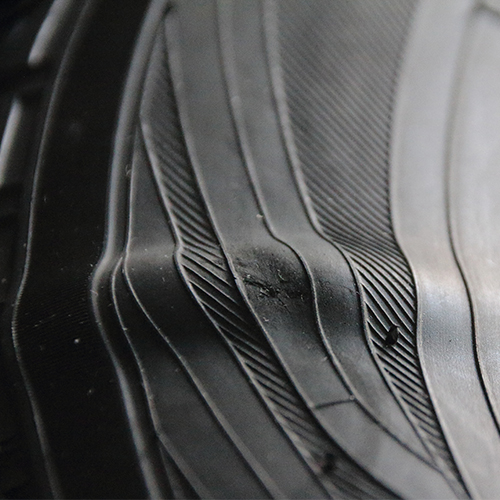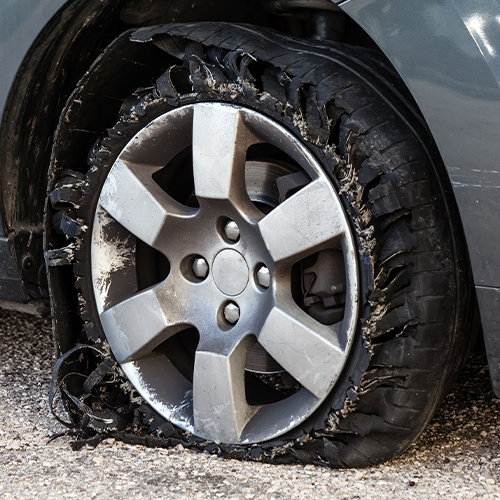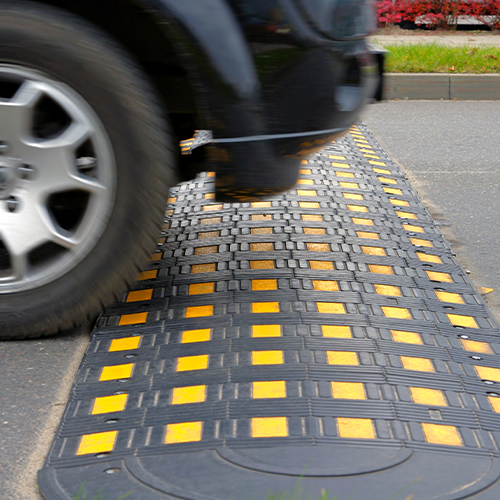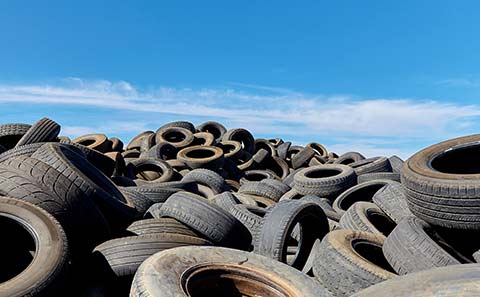We all like our tires to be in good shape, as a lot depends on tire condition when it comes to driving safety. A bubble in your tire is not something to take lightly, since the tire basically becomes unstable. As pressure develops, the fabric of the inner tire can’t withstand it anymore and it can burst at any time.
Noticing sidewall bubbles or a section of the tread bulging is already a bad sign. If you have bubbles anywhere on your tires, then you should get them replaced as soon as possible. Below, we are going to talk about what these bubbles are all about and how to prevent them.
What is a Tire Bubble?
A tire bubble is basically the surface of your tire bulging out. It can appear both on the footprint and the sidewall, and it is generally caused by driving impacts. A bubble in your tire can also form from a weak spot that can be the result of extensive footprint wear.

However, the most common spot for air bubbles is the sidewall. Such a bubble appears as a deformation on the rubber. One of the reasons why it should be your top priority to fix this problem is that it also causes air seeps.
As you drive, more and more moisture will seep in, making the rubber bulge out. As the air coming from the tire’s inner lining escapes, it is going to make the bubble bigger. This can damage your tire’s structural integrity, increasing the risk of tire blowout.
What Causes Tire Bubbles?
Now, let’s talk about how tire bubbles form in the first place.
The tire’s internal structure, the tread, and the sidewall all consist of several layers of plies, belts, and rubber. Tires have their own rigid structure that ensure a long lifespan and driving safety.
This complex structure has to stand its ground in inclement weather and sometimes on difficult road conditions as well. The latter should be avoided if you want to keep your vehicle and your four tires in a good shape.
A sidewall bubble is not always caused by external circumstances. It can be the result of a manufacturing defect you were not aware of. If that’s not the case, then it is probably caused by too much load, low air pressure, or bad road conditions.

Tire Pressure
Often, finding a tire bubble means that the tire pressure wasn’t ideal for a long time. Measuring your tire pressure regularly is essential for preventing tire bubbles. While driving with low air pressure, there is a high possibility that you are going to end up with bubbles on your tire.
This is the biggest culprit when it comes to tire bulges. As a precautionary measure, make sure to regularly inspect your tires and check the pressure levels. All you need is a tire pressure gauge and you will be able to longer protect your tire from bubbles.
Speed Bumps and Road Conditions
Problematic road conditions and driving habits are two of the main factors that lead to tire bubbles. All those small collisions, construction areas, potholes, curb, and speed bumps can result in flat tires. In order to avoid bubbles, you need to drive carefully.

If you avoid potholes, railroad crossings, and busy roads, you can prevent tire bubbles in the long term. Also make sure to steer safely with your tires because extensive driving pressure can also lead to damaged tires. Your tire’s sidewall has to deal with the forces of cornering while you drive your vehicle, which put even more pressure onto the tire structure.
Tire Bubbles and Tire Bulges: What to do?
A tire with a bubble is not something you can or should try to fix. It is best to find an auto repair service center and get your tire replaced. Until that is done, it is not safe for you to drive your car, not even to the closest tire shop. If you have a reserve tire, you better put that on and get a new one installed once you reach the spot.
If your tire has a bubble, you need to stop driving immediately! It means that the tire’s internal structure has failed. You can easily lose control of the car with such tires or end up with a flat tire soon after. Furthermore, hitting a curb or potholes can damage your suspension system or your wheel rim.
Do You Need a Spare Tire?
Finding a bubble in one of your car’s tires means that you shouldn’t drive on it any further. This is when a spare tire comes in handy. If you happen to have one in your trunk, you can install it right away in place of the damaged one. This will allow you to get to the next tire shop and get your tire replaced.
What to Look for when Inspecting Tires?
We recommend you to check your tires every now and then, as there can be bubbles on it even if you drive carefully. It is especially important to check them after hitting potholes or driving on uneven roads. In case you notice a wave-like pattern, then that is already a sign of tread-separation.
At first, it is just a curve on the footprint or on the sidewall. Then, it turns into a tire with a bubble before you know it. Once you are at it, don’t forget to look for dry rot as well. After extensive sun exposure or lack of moisture, tires can dry out and small cracks can develop.
All these irregularities can be quite dangerous. Such tires can put your car at great risk, as they can explode at any moment. We have also attached a video to demonstrate that so you can see it for yourself, without having to actually experience it.
Check out our help section for more info about the Signs of Tire Failure.
Frequently Asked Questions (FAQs)
How can I prevent tire bubbles from forming?
You can prevent tire bubbles by avoiding impact damage. Hitting potholes, curbs, and speed bumps can do great damage to your tires and wheels in the long term. By driving with care and avoiding uneven road surfaces, you can guarantee a long lifespan of your tires.
How far can I drive on a tire that has a bubble in the sidewall?
You should not drive with a tire that has a bubble in its sidewall. Instead, stop your car and replace that tire with a spare one. Then you can drive to the closest tire shop and get it replaced with a new one. By driving with a damaged tire, you can risk your own safety and the safety of others on the road.
Are tire bubbles and other deformities covered by the tire manufacturer’s warranty?
You can get the manufacturer to provide new tires in case the bubbles formed due to a manufacturing defect. Warranties usually last 4 to 6 years or until the tread on your tires wear down. Within that time frame, you should get new tires if you see an air bubble on them.


